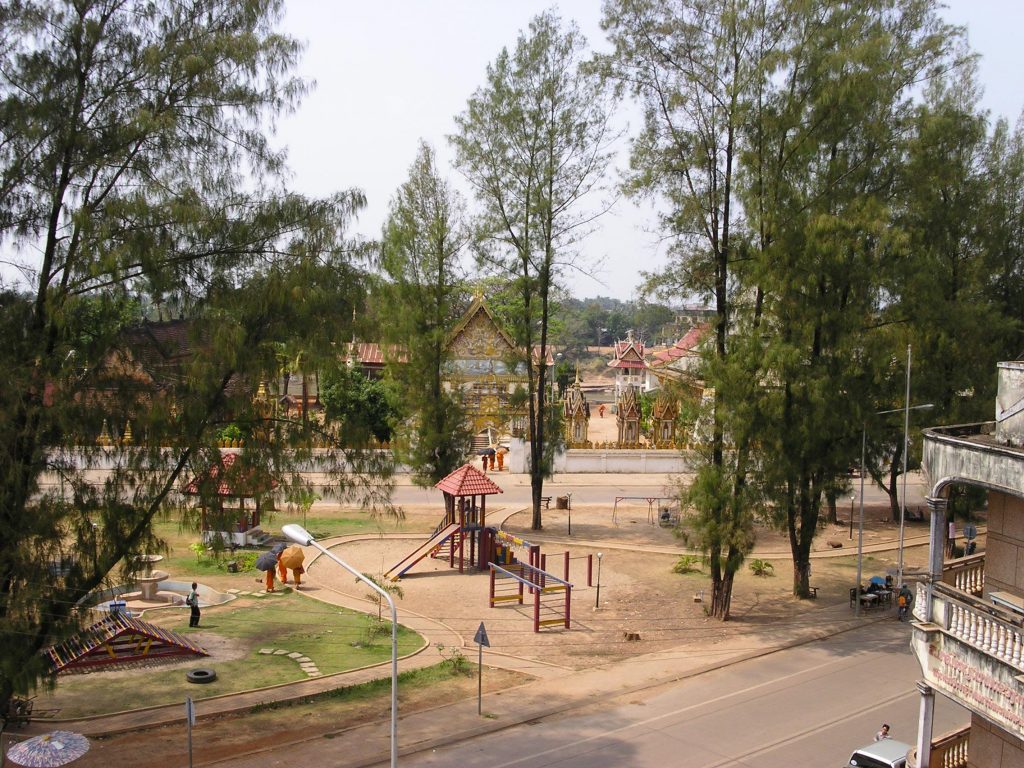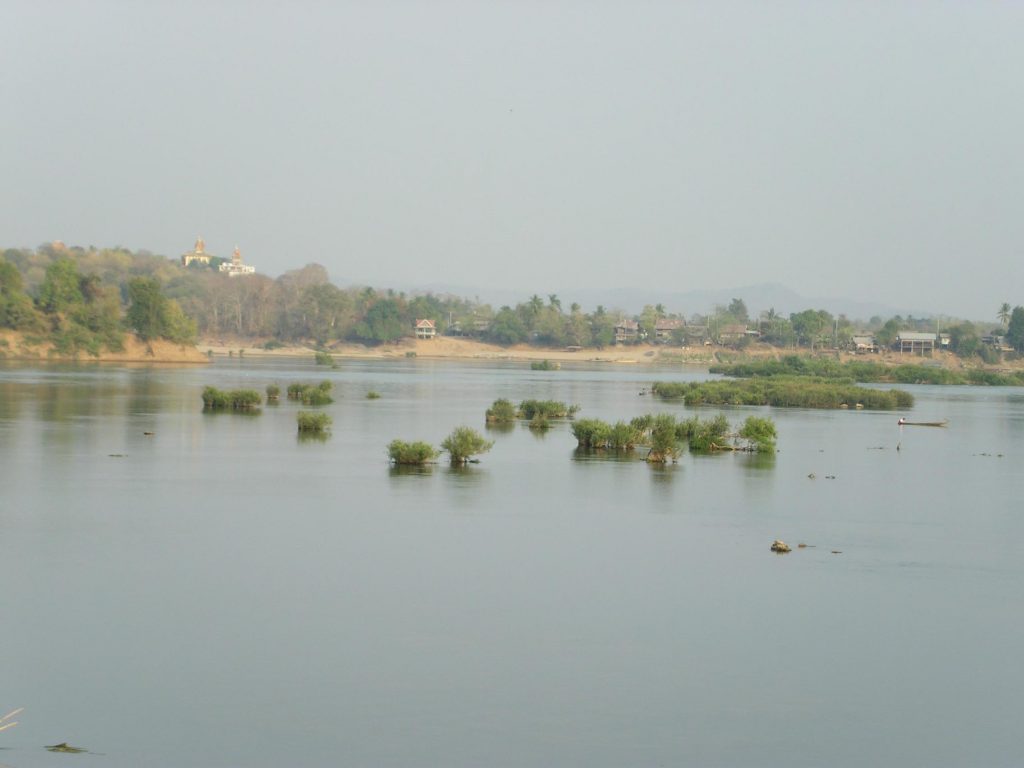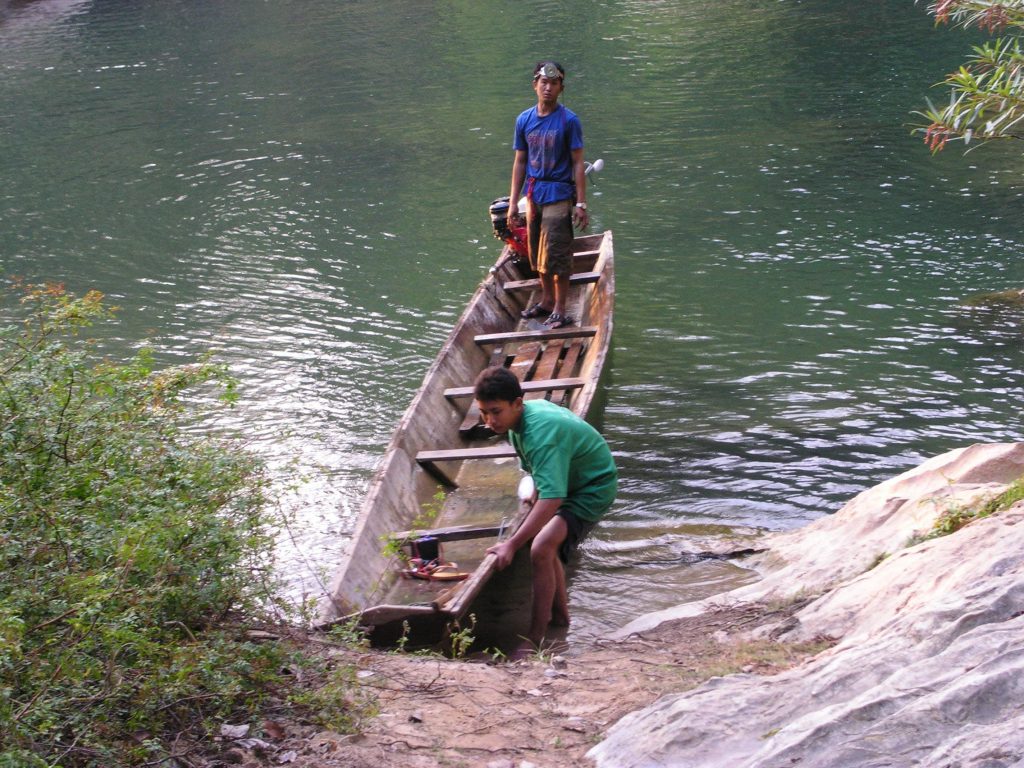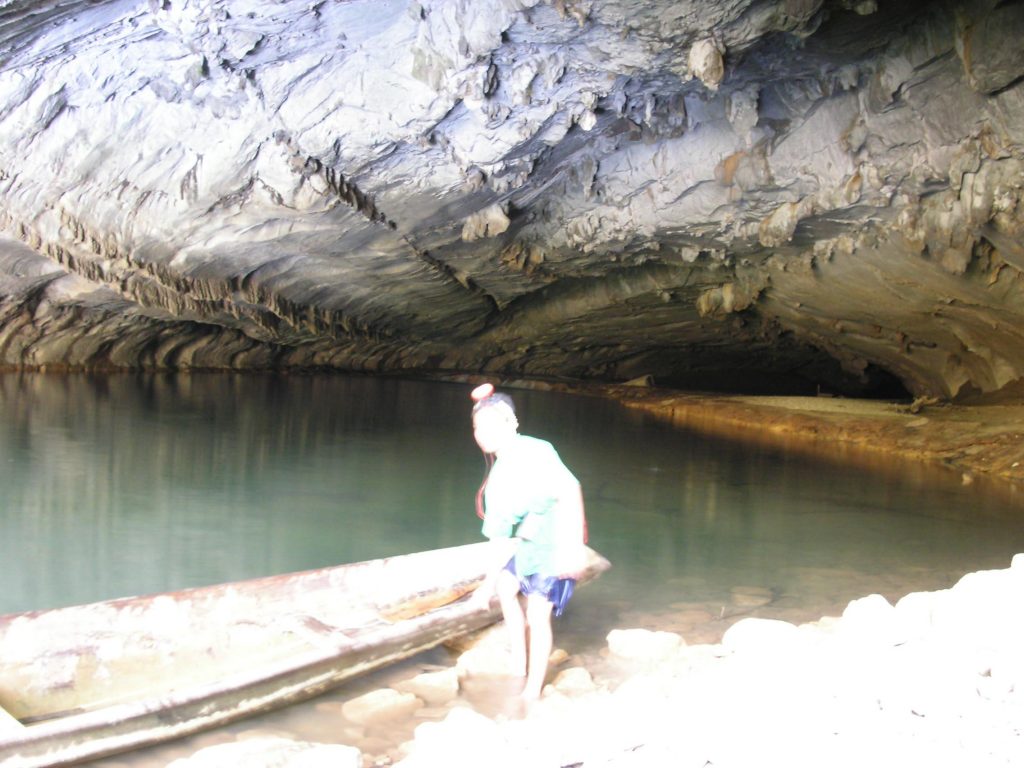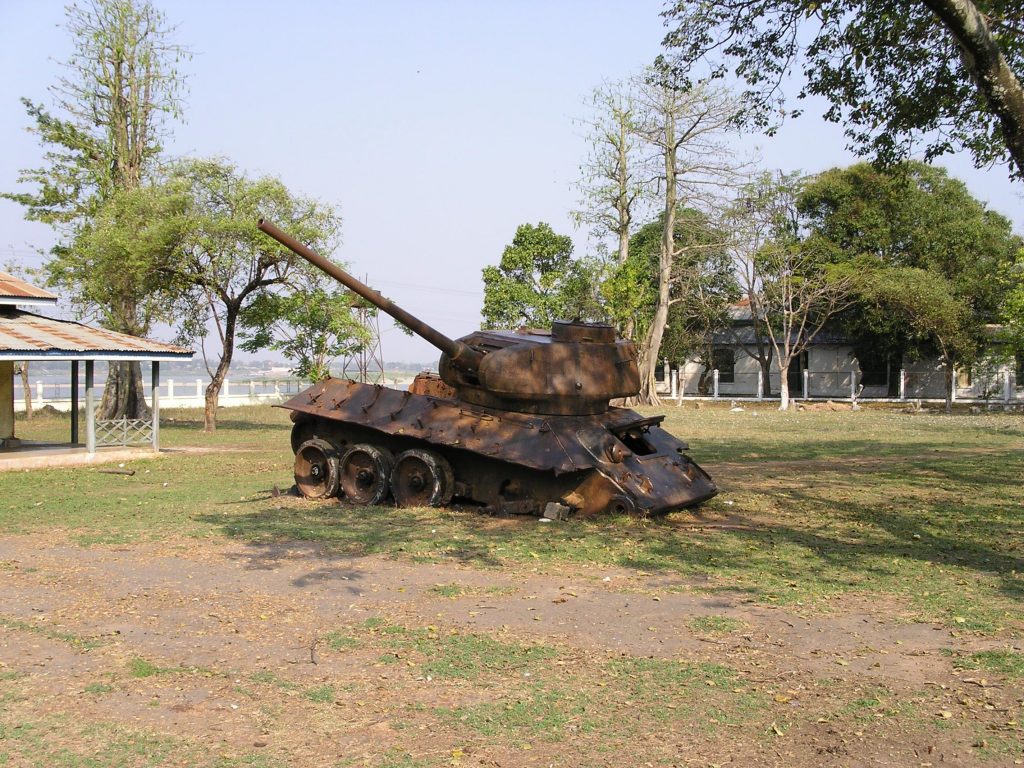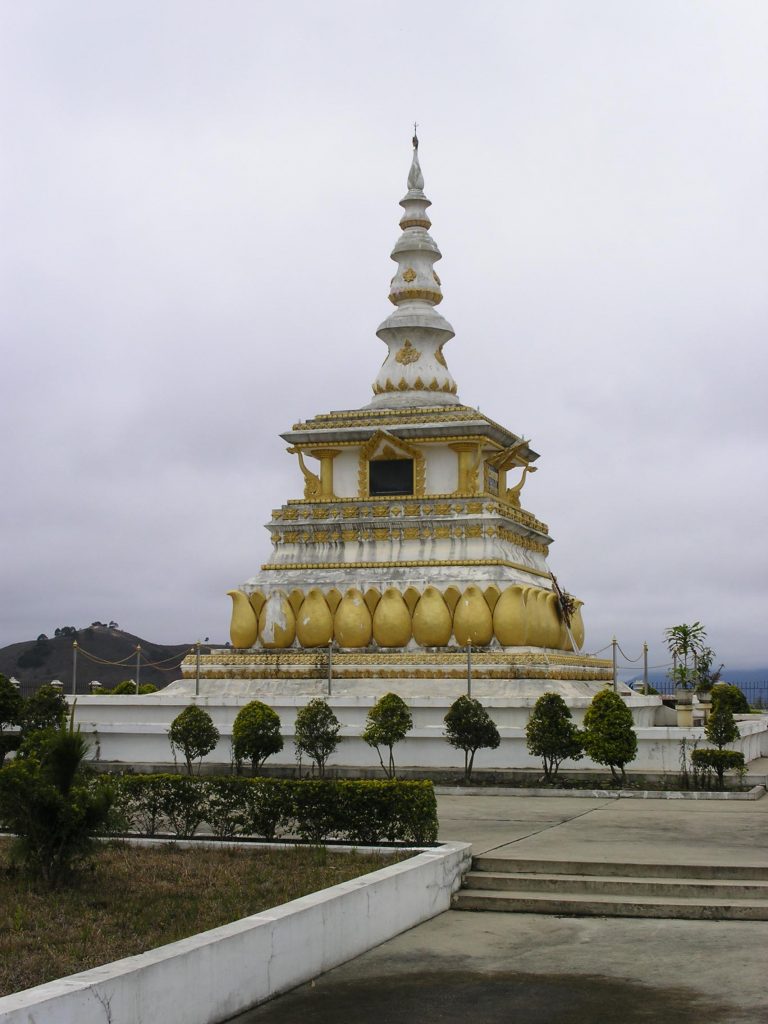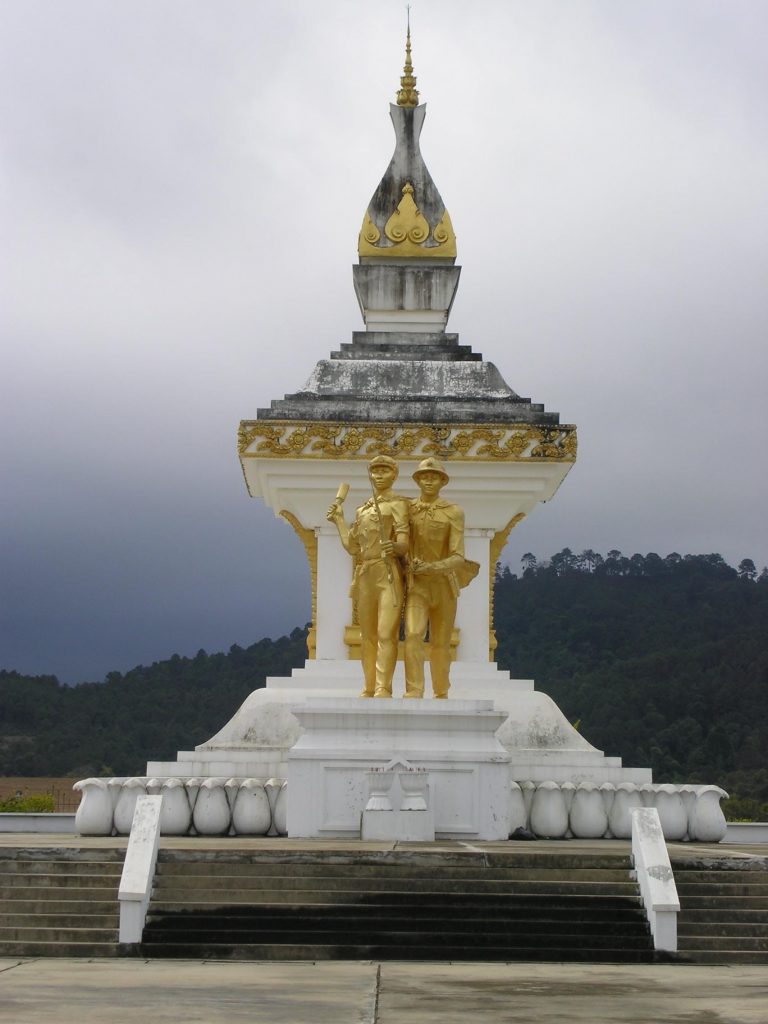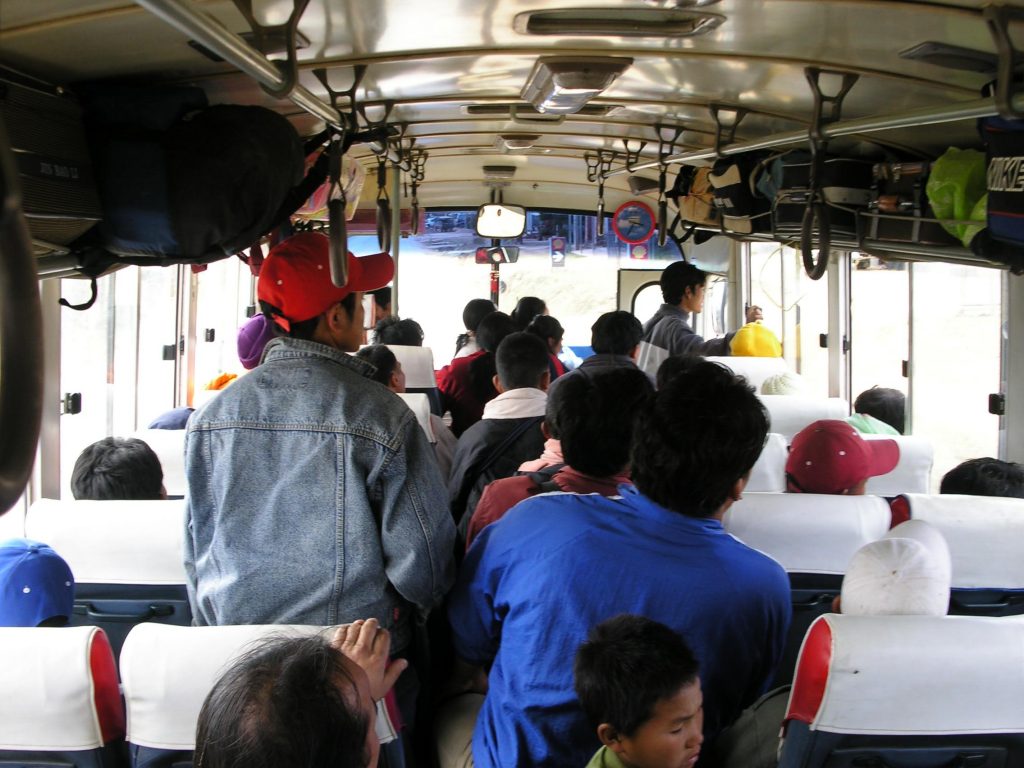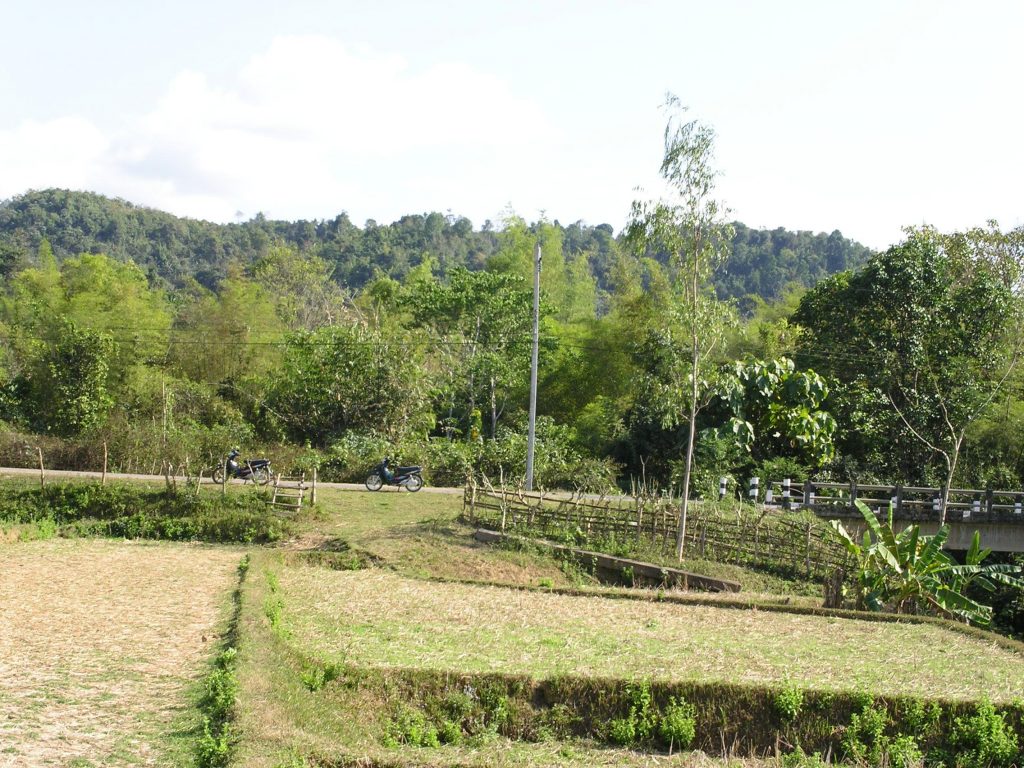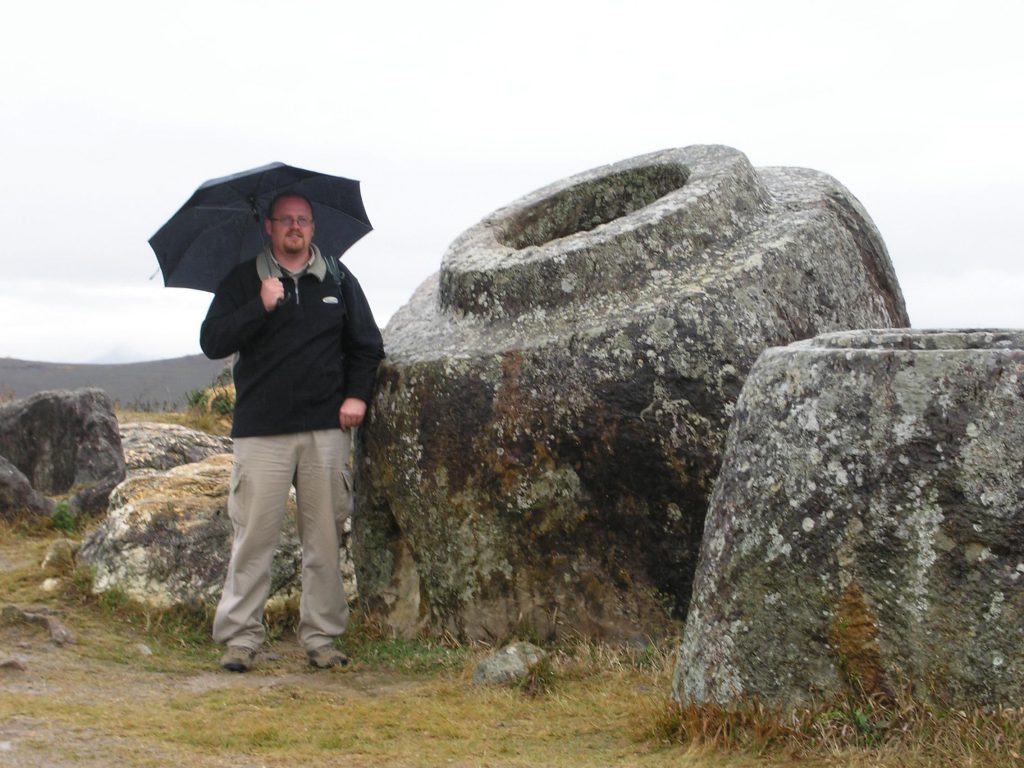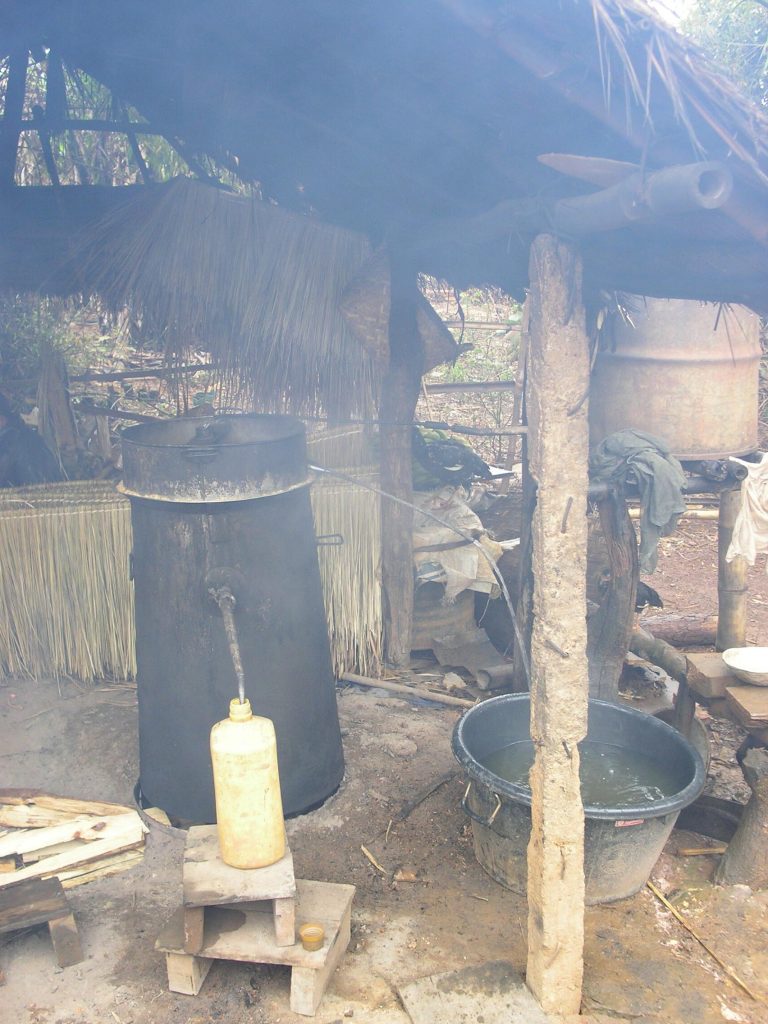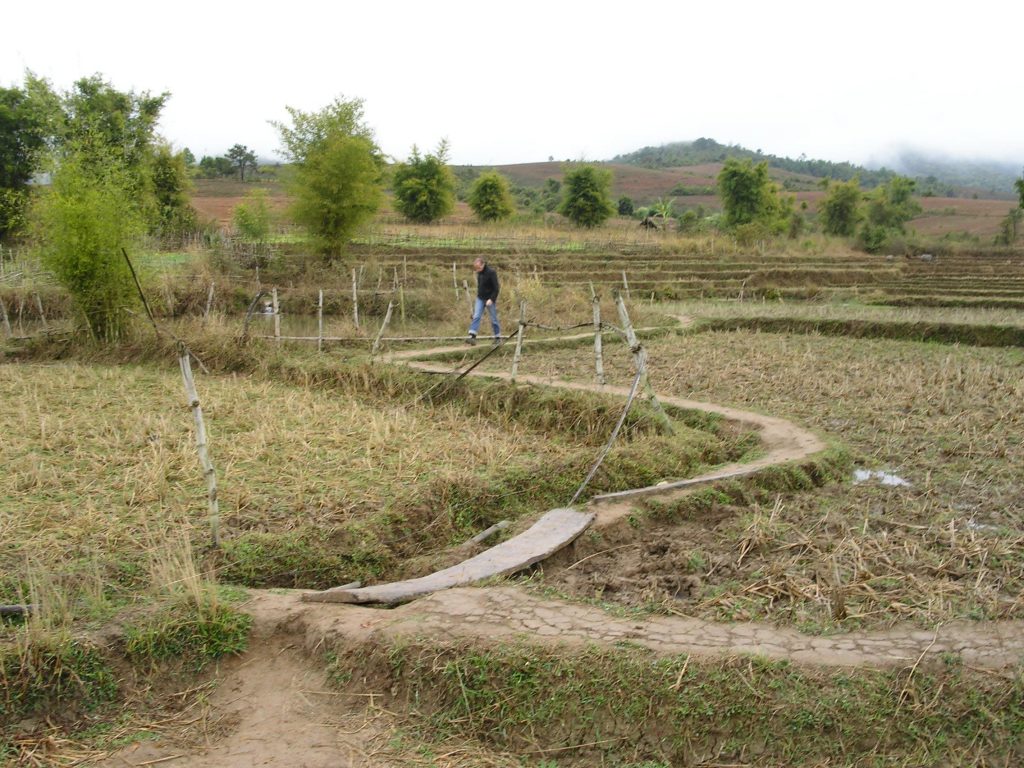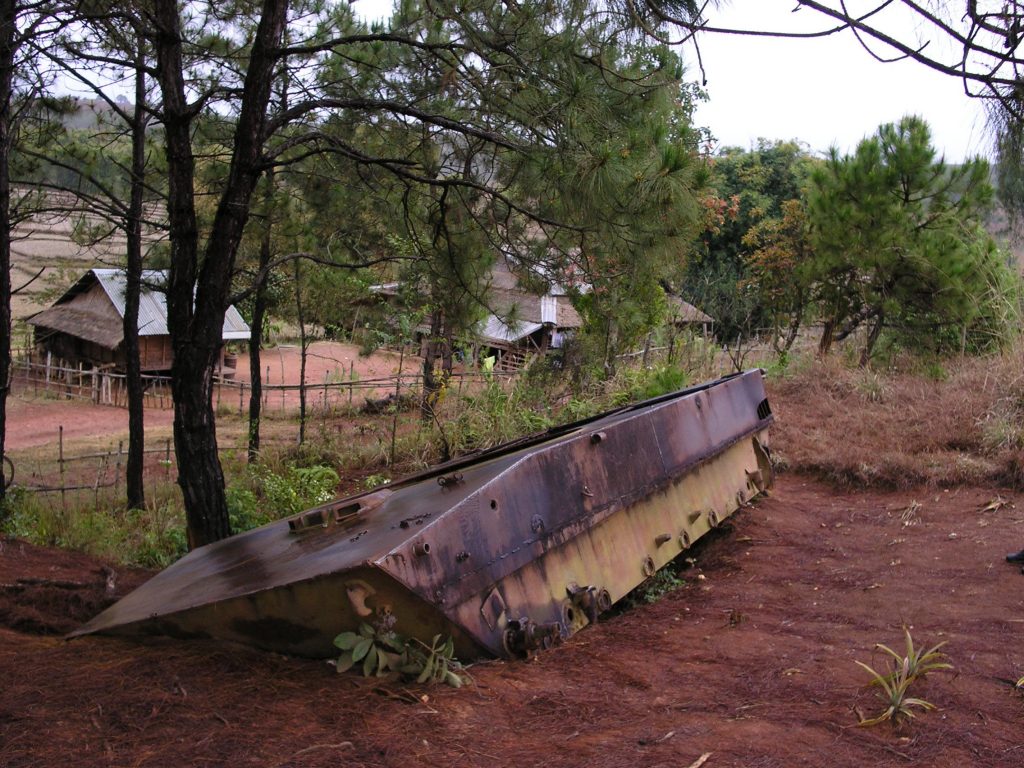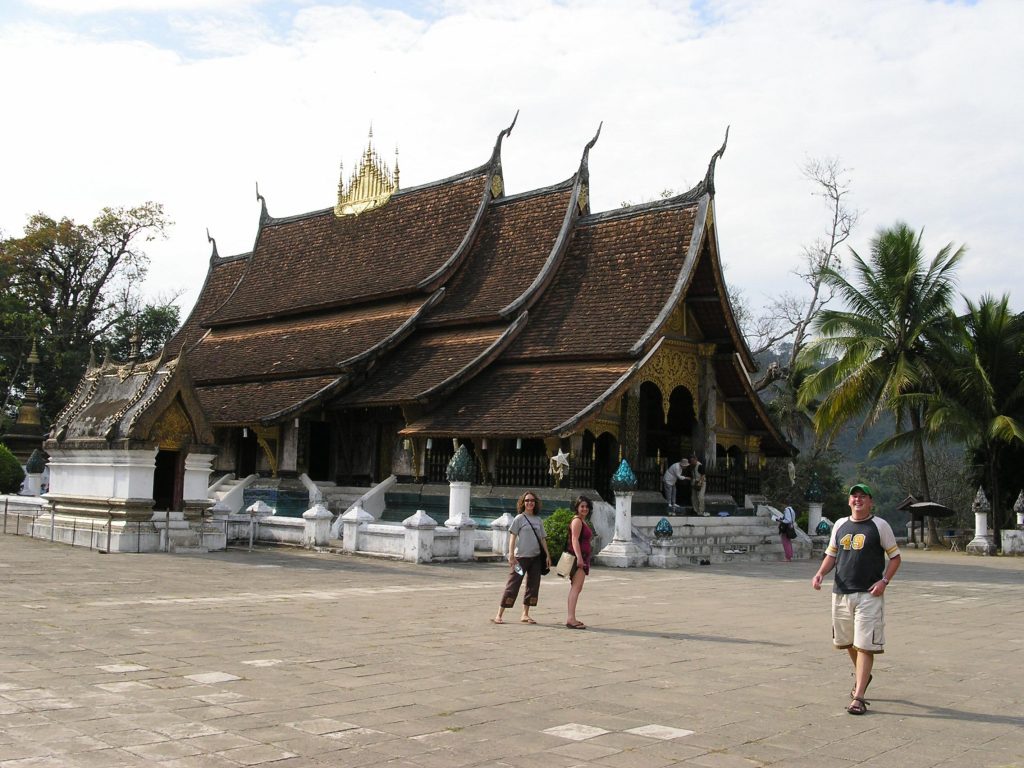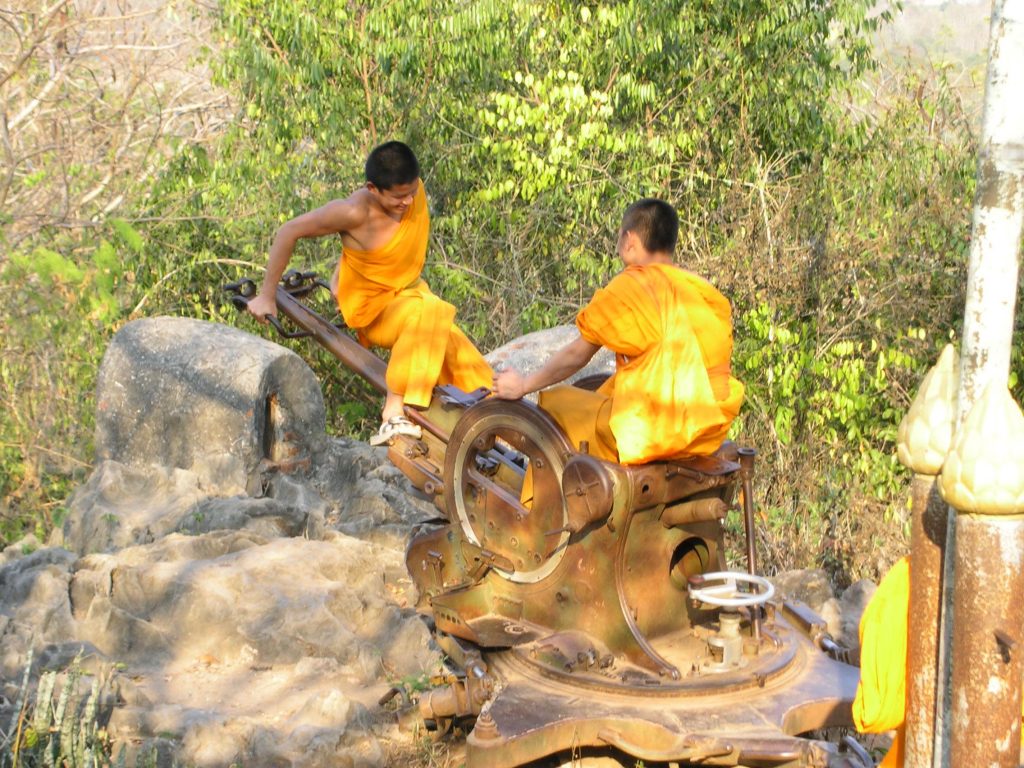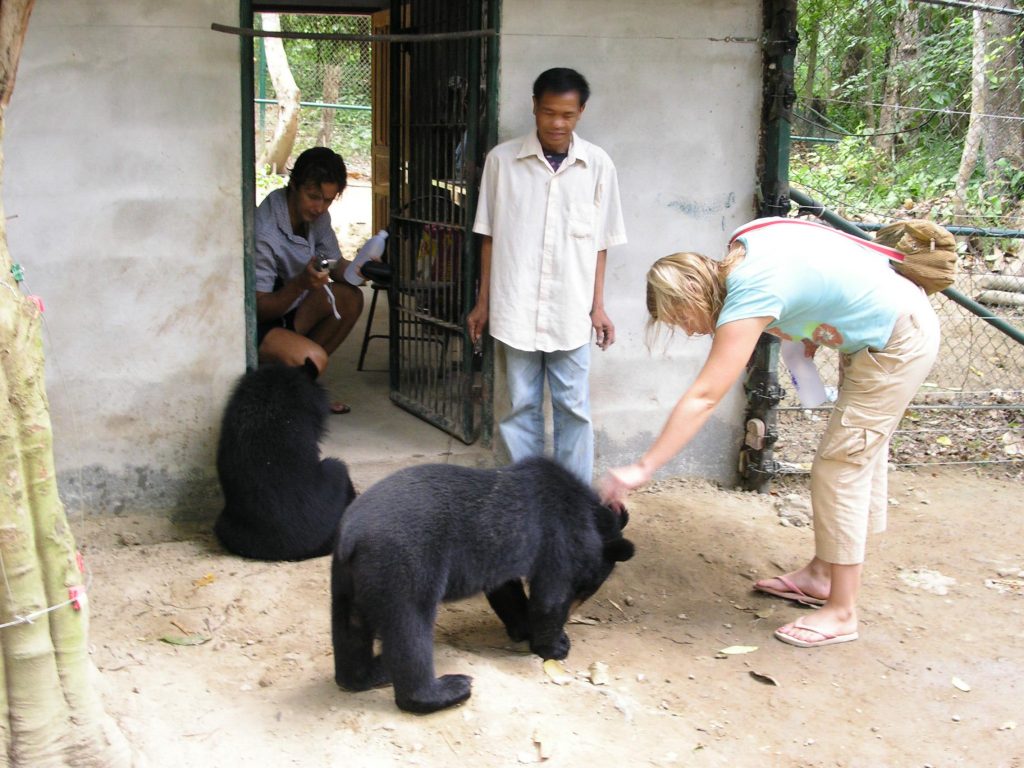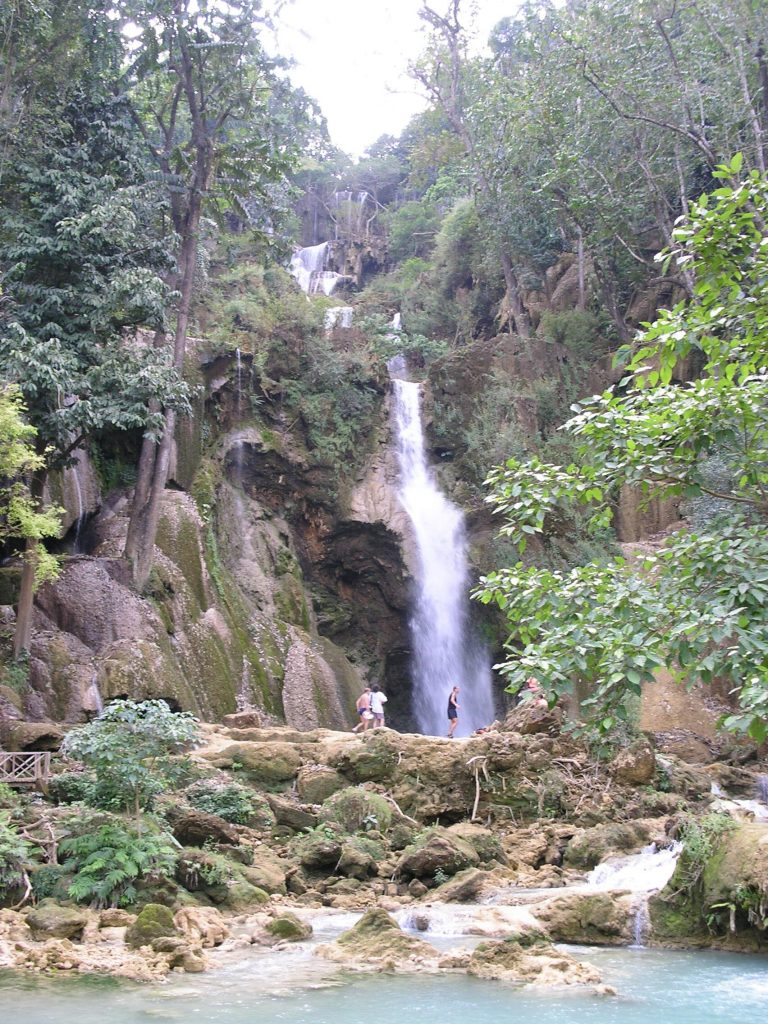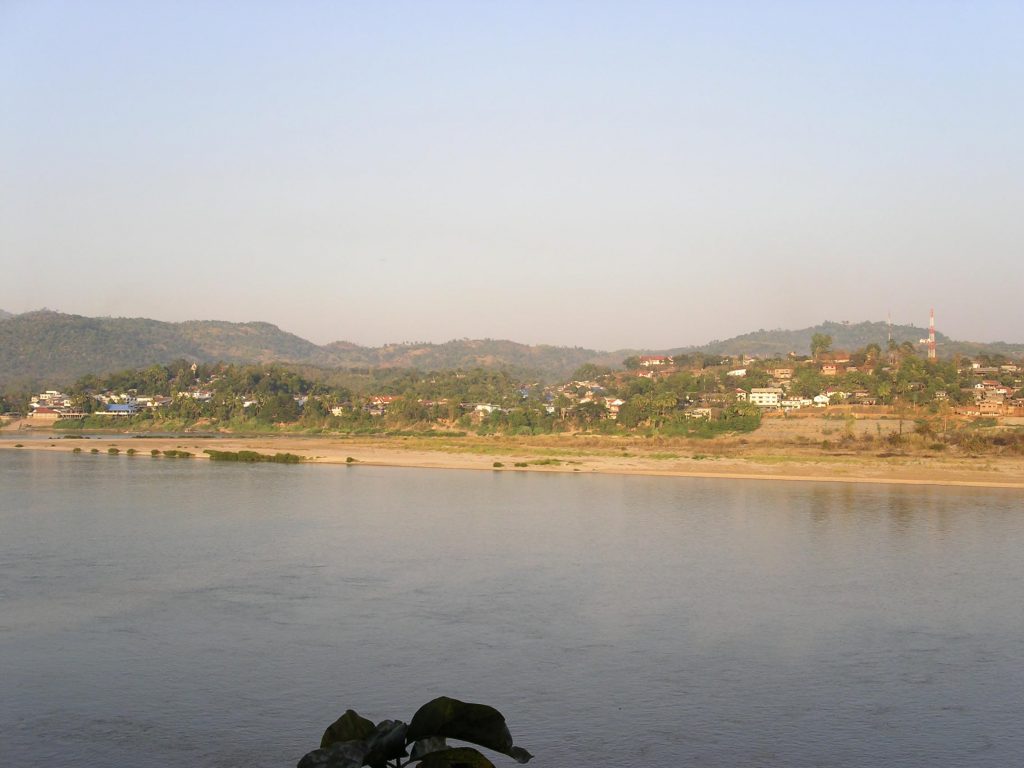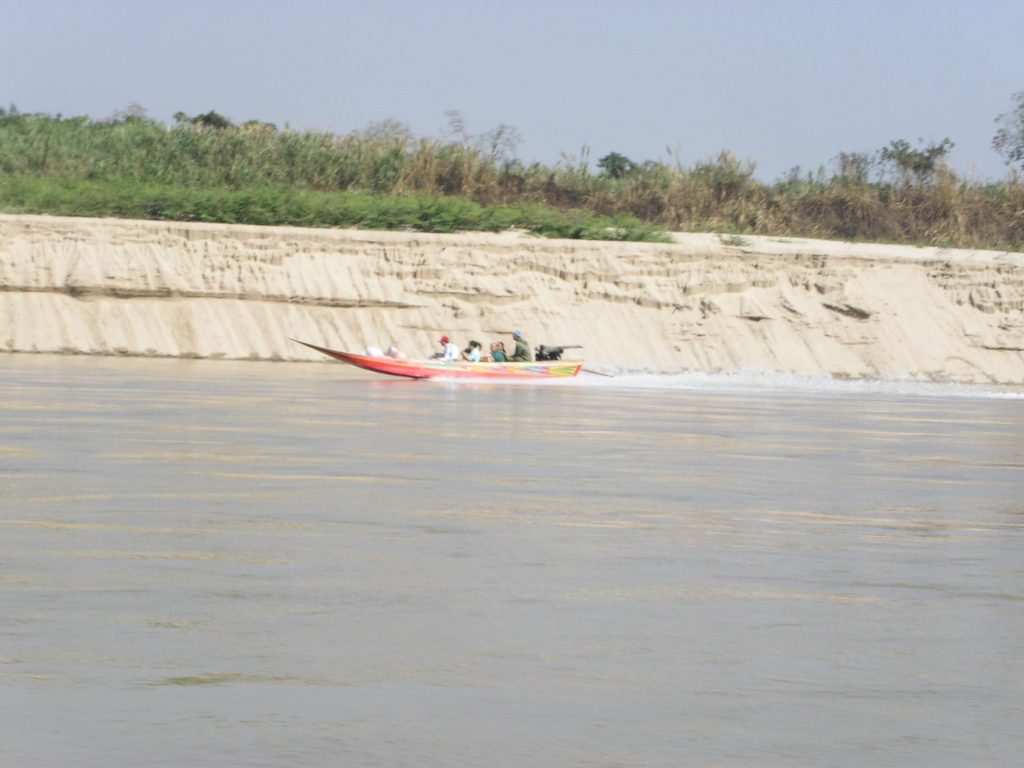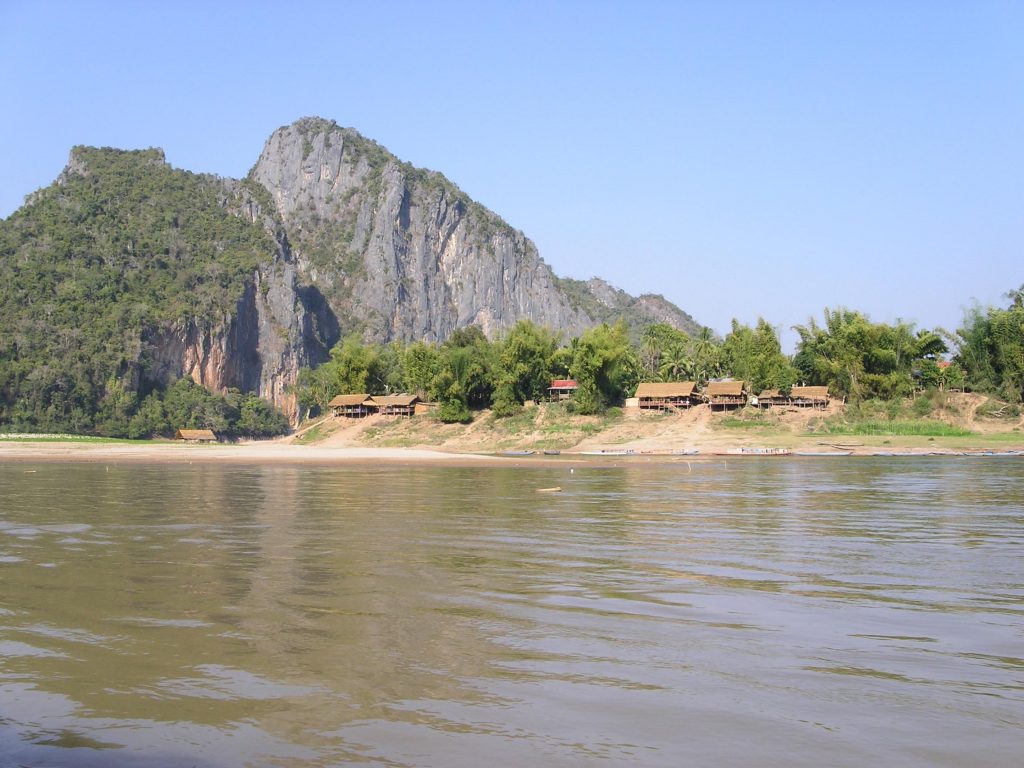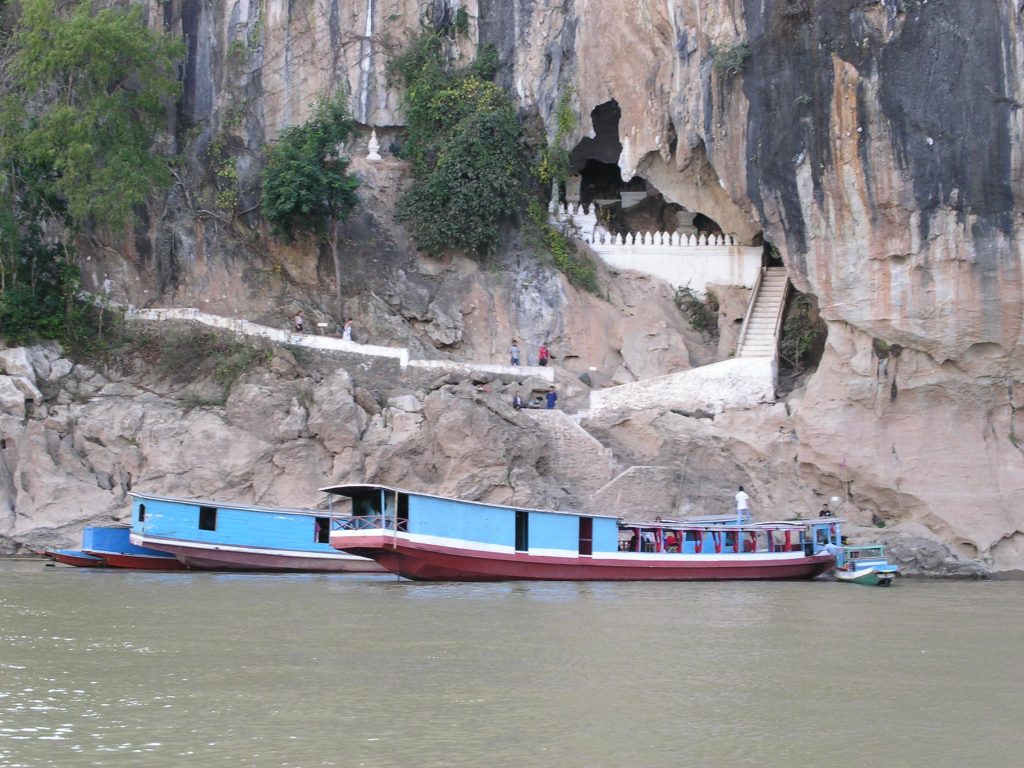Unfortunately the first Cambodian we met was a nasty little sh*t who was determined to rip us off. First of all he wanted to charge way over the going rate for the boat and then was going to fill it up with his mates travelling for free. We finally negociated a small discount but had little leaverage as we had stamped out of Laos and couldn’t return. Then he asked for the payment up front and suspecting that all would not go well we refused, moving to half now, half on arrival. he was having now of it and pulled his mates out the boat. Whilst arguing we took the opportunity to get one full width seat each and when we relented he wanted to stick all his freebies back in. We refused saying he could have the remaining seats but that we were so big and the seats small we were having one apiece. Finally he relented and we set off. It was only a short hop over the river to the Cambodian checkpoint where we would get stamped into the country and whilst this was done we made sure one person was always in the boat so it couldn’t abandon us. Having been stamped in the driver pulled the silencer off the exhaust and we set off on the run down the river to Stung Treng. Thankfully the remainder of the journey was uneventful .
Stung Treng is a small place that has only just got on the beaten path as the border opened. Dinner was a Cambodian style Sweet & Sour soup followed by an early night as the express boat south left at 7:30am.
The express boat looked to be a big Russian built thing and on arriving at the pier bumped into Robert & Nancy. Having done this before they suggested travelling on the roof of the boat which seemed a great idea. It was fantastic travelling down the Mekong river with the wind in your hair, the sun shining and a panoramic view. Occasionally we would slow right down to transfer goods and passengers onto small boats that had come out from the villages. At 11am we stopped at Kratie where Robert and Nancy got off, however I was continuing for 3 more hours down to Kompong Cham. After another hour on the toof I realised I was on the verge of getting burnt so had to head inside. The aircon in there kept it pleasant enough but it wasn’t the same as the roof.
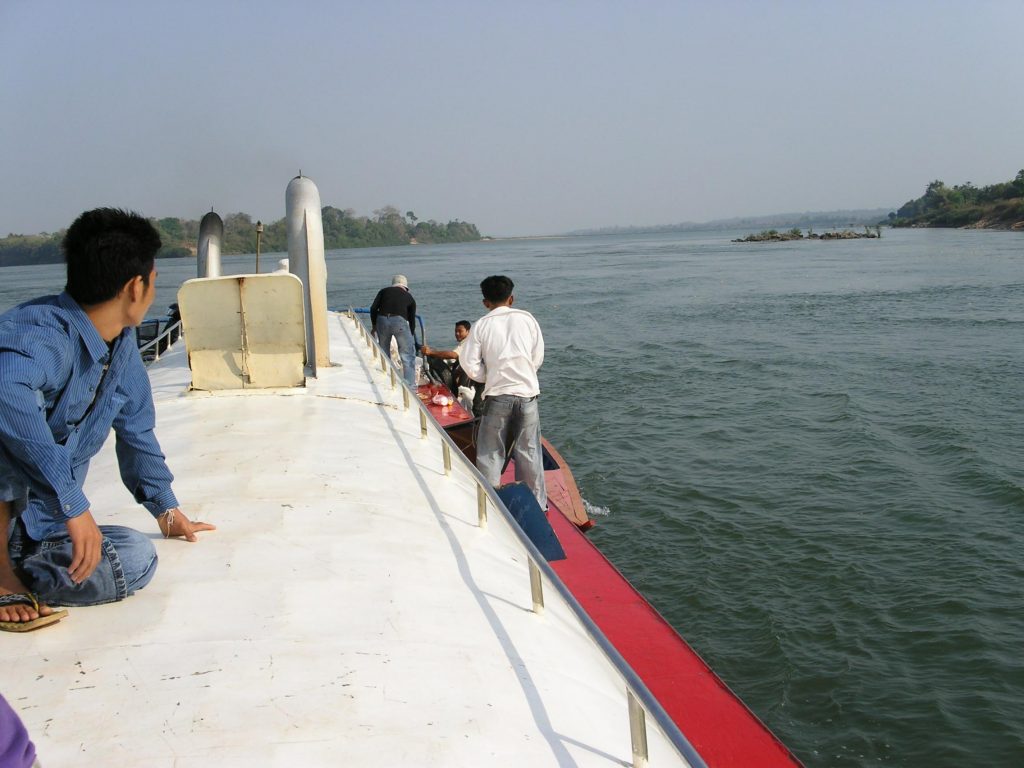

I knew I could get a bus from Kompong Cham to Phnom Penh but didn’t know the times so was prepared to stay the night here if necessary. First I had to get some lunch. On the way into town I was joined by a motorbike taxi who wanted to knwo where I was going, whether I intended to stay and telling me all the wonderful places I could go. My mistake was being too polite and not being blunt enough and had to put up with his diatribe until my food arrived. There were still buses running so I decided to move on that day. In getting to the bus station I noticed how much hotter it feels this far south, distinctly different from Luang Prabang and Vientienne. The bus was air conditioned and in good repair and the initial part of the road was good. What was awful was the driving of some other drivers and around half way the road deteriorated with potholes spanning much of it.
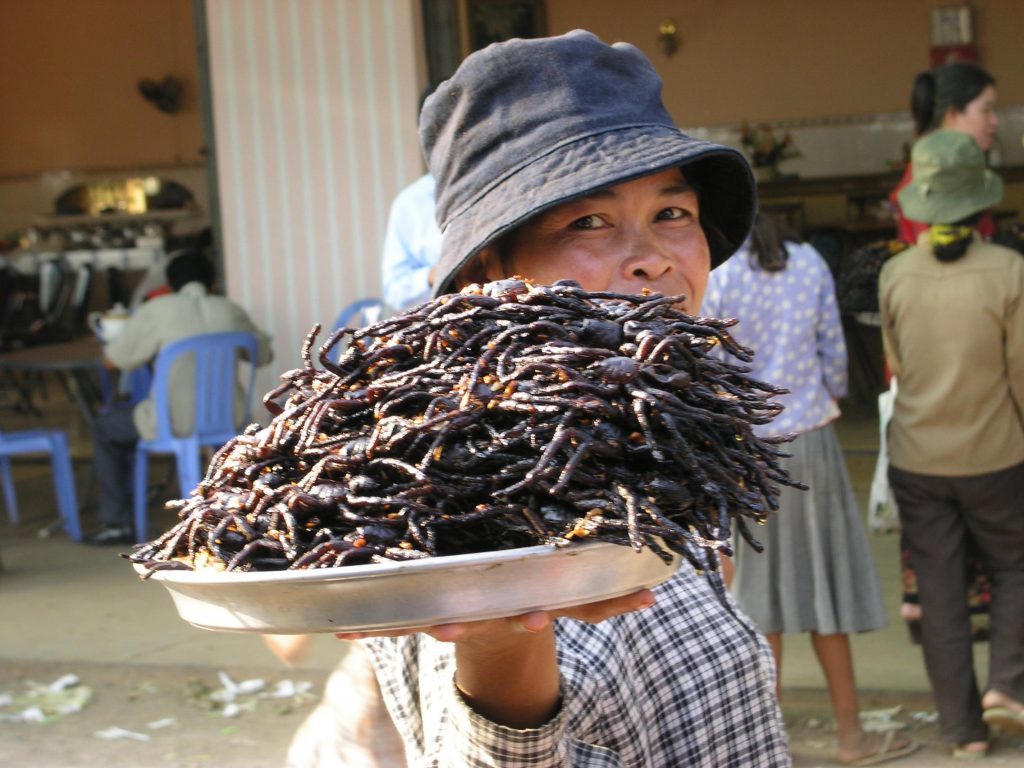
Arriving in Phnom Penh it was clear that the only way to get to the hotel was to catch a motorbike taxi. With my large rucksack wedged between his knees and me perched on the back we set off through the local traffic where everyone has right of way. Not sure whether to close my eyes or to prepare to jump off we actually made it in one piece.
I was staying near to a Phnom Penh pizza house that has become an institution, so indulged in my first western food for a while that evening. I was tired from the days travels so crashed out earlyish after watching a bit of BBC World in my room (my first TV in weeks).
Cambodia feels a lot more busy than Laos and in general the people seem friendly.

